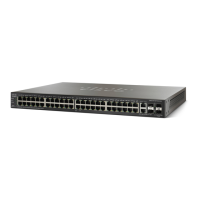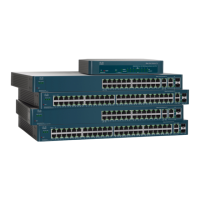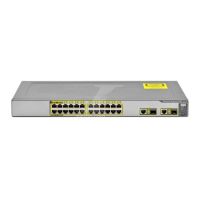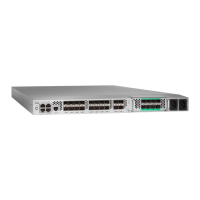Port Management
Link Aggregation
Cisco 500 Series Stackable Managed Switch Administration Guide 192
10
LACP Priority and Rules
LACP system priority and LACP port priority are both used to determine which of
the candidate ports become active member ports in a dynamic LAG configured
with more than eight candidate ports.
The selected candidate ports of the LAG are all connected to the same remote
device. Both the local and remote switches have a LACP system priority.
The following algorithm is used to determine whether LACP port priorities are
taken from the local or remote device: the local LACP System Priority is compared
to the remote LACP System Priority. The device with the lowest priority controls
candidate port selection to the LAG. If both priorities are the same, the local and
remote MAC addresses are compared. The priority of the device with the lowest
MAC address controls candidate port selection to the LAG.
A dynamic LAG can have up to 16 Ethernet ports of the same type. Up to eight
ports can be active, and up to eight ports can be in standby mode. When there are
more than eight ports in the dynamic LAG, the device on the controlling end of the
link uses port priorities to determine which ports are bundled into the LAG and
which ports are put in hot-standby mode. Port priorities on the other device (the
non-controlling end of the link) are ignored.
The following are additional rules used to select the active or standby ports in a
dynamic LACP:
• Any link operating at a different speed from the highest-speed active
member or operating at half-duplex is made standby. All the active ports in
a dynamic LAG operate at the same baud rate.
• If the port LACP priority of the link is lower than that of the currently-active
link members, and the number of active members is already at the maximum
number, the link is made inactive, and placed in standby mode.
LACP With No Link Partner
In order for LACP to create a LAG, the ports on both link ends should be
configured for LACP, meaning that the ports send LACP PDUs and handle received
PDUs.

